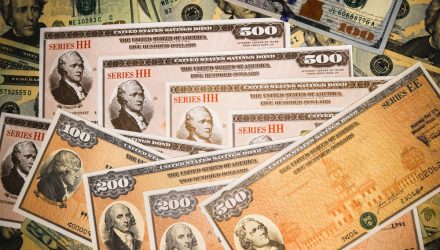Last year, aggregate bond indexes posted some of the worst showings on record. This year, surprise rate hikes by the Federal Reserve in the second half remain a topic of discussion among investors in bonds.
Throw in the fact that equities are rallying, and it’s understandable that many market participants are pensive about bonds. On the other hand, some experts believe that today’s elevated bond yields indicate that rare opportunity is afoot for investors to asses bonds and the related exchange traded funds.
Should that assessment prove accurate, ETFs such as the Calvert Ultra-Short Investment Grade ETF (NYSE Arca: CVSB) could benefit. CVSB sports a 30-day SEC yield of 5.76%. Alone, that’s impressive, particularly for an ultra-short-duration product. The allure grows when considering that the prices of bonds move inversely of yields, and history indicates that the higher an investor’s starting yield, the more the odds of success shorten.
CVSB Is Near-Term Relevant
One of the hard parts in investing, regardless of asset class, is that no one possesses a crystal ball. Still, some professionals believe that the bond market is primed for near-term upside. Of course, that could be of assistance to assets such as CVSB.
“Our proprietary risk models, based on 5,000 simulations, suggest the bond market (represented by Bloomberg U.S. Aggregate Bond Index) may offer better than 45% odds for an annualized double-digit return over the next quarter, as opposed to about 5% odds for a quarterly annualized double-digit loss,” according to Fidelity.
Potentially adding to the near-term allure of CVSB is the point that Fed funds futures indicate that traders believe the Federal Reserve will not announce any more rate hikes between now and year-end. It might sound like a stretch today, but confirmation that the tightening cycle is over could set the stage for more credible rate cut expectations entering 2024.
“The potential for peak policy rates in 2023 also raises our expectations for positive bond-market returns, based on the historical return for multiple bond categories following peak yields,” added Fidelity.
In other words, investors may not want to wait to take advantage of CVSB’s high yield. If expectations increase that rate cuts could be in the offing next year, the ETF’s yield will likely decline, meaning its price will rise. Additionally, CVSB could be one of the bond ETFs built for this environment.
“As of March 31, 2023, the probability of an absolute loss over the next quarter in short[1]duration credit is less than 5%, down from 50% in mid-2022,” concluded Fidelity.
For more news, information, and analysis, visit the Responsible Investing Channel.

